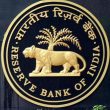Three roads to banking platforms
Think of the world’s most exceptional companies. The ones that redefined the business. The most innovative and agile firms. Those that set the benchmark in experience. Are the most successful. You will find that the majority are platform businesses.

Banks must move quickly with their platform strategies – the first mover is best positioned to win in a business where the winner takes all
These are not just digital businesses that were born as platforms, such as Airbnb or Uber or Facebook, but also incumbents, such as Microsoft or Apple, which have consolidated their leadership by building them. Today, the platform is a major part of every incumbent organisation’s effort to scale digital transformation, even more so because as digital adoption goes up due to pandemic-linked reasons, so does the attractiveness of the platform business model.
From our experience of serving a vast number of financial institutions around the world, we find that they are employing the following strategies to drive their platform agendas:
1. Building a platform marketplace
UK’s Starling and India’s Paytm are examples of banks that have set up financial marketplaces to sell not only their own products and services but also best-of-breed offerings from other providers. Paytm Bank, for example, sells white-labelled credit cards from Citibank, term deposits from IndusInd Bank, and unsecured loans from various financial companies through its platform.
Further, some banks have set up marketplaces for specific customer segments – both HSBC’s Connections Hub and Deutsche Bank’s UnternehmerPortal target SMEs. Connections enables HSBC customers to put up business profiles, connect with other SME customers of the bank, and review recommended buyers and sellers, while the Deutsche Bank platform provides services such as business planning, help with international trade, and benchmarking against other industry players.
UnionBank GlobalLinker has more than 350,000 SME members who can network with potential customers, suppliers and partners, sell their products on an e-commerce store, get benefits on essential business services, and share and learn from the experiences of other SMEs.
DBS Bank has become a world-leading example of platform success with its marketplaces for used cars, travel, utilities and real estate, while Bancolombia operates an Ebay-style platform for used goods.
Like the offerings, the “platform build” also has variety: it may be backed by a single bank, or like in the case of India Trade Connect, by a consortium of institutions; it may be built from scratch or acquired from another (think Groupe BPCE buying out Fidor, American Express acquiring Kabbage, and Fifth Third buying healthcare platform Provide).
2. Providing digital banking infrastructure to other platforms
The most common example of this strategy is the provision of Banking-as-a-Service (BAAS). Several banks, including BBVA and Goldman Sachs, offer know your customer (KYC), payment processing, lending or trade processing services to partners who build value-added services on top. The partners range from neobanks offering great experiences to digital businesses like Amazon or Google that want to integrate banking and payments within their own propositions.
Alternatively, a regulatory or industry initiative could drive such an arrangement. The best example is Open Banking regulation, which facilitated access to digital infrastructure for payment processing and for account services in the UK and Europe. In India, an industry initiative in the form of UPI (Unified Payments Interface) is providing the payment rails to Google Pay, PhonePe and similar services.
3. Participating meaningfully in another platform
Joining another platform is easy but of limited value when there are many other members. But a bank can make this arrangement work by co-creating something that makes it stand out. For instance, a bank can embed its services into the buy now pay later (BNPL) facility on Amazon, or embed insurance products on a flight booking platform.
Some banks have entered into exclusive partnerships with platform businesses with great success – Goldman Sachs, with its tie up with Apple for Apple Card, and with Amazon to provide up to $1 million in credit to merchants selling on the platform, is a standout example.
The partnership could also be with a business application that is popular with consumers, such as Whatsapp or Apple Pay, or with an enterprise resource planning (ERP) solution, such as Tally, to embed corporate banking services within.
Besides enabling banks to reach new customers or serve new offerings to existing clients, a platform business can also improve their bottom-lines.
Banks may choose one of the above three strategies, or a combination, based on their particular context. But they must move quickly, because as the experience of other industries tells us, the first mover is best positioned to win in a business where the winner takes all.
By Puneet Chhahira, Head of Marketing and Platform Strategy, Infosys Finacle
About the author
 Puneet is the global marketing and platform strategy leader at Finacle Infosys’s digital banking products unit that serves financial institutions in over 100 countries.
Puneet is the global marketing and platform strategy leader at Finacle Infosys’s digital banking products unit that serves financial institutions in over 100 countries.
Puneet has led multiple roles across consulting, product management, marketing, startup engagements, and platform strategy during the last 16 years at Infosys Finacle. With his close collaborations with global banks, startups, and industry thought leaders, he brings along a deep understanding of the evolving financial industry landscape and how modern technologies can help unlock new possibilities.
Before joining Infosys, Puneet was a business head at Bajaj Allianz Life Insurance – one of the largest life insurers in India. Puneet holds an engineering degree in computer science and specialised in marketing and finance during his post-graduation.












































